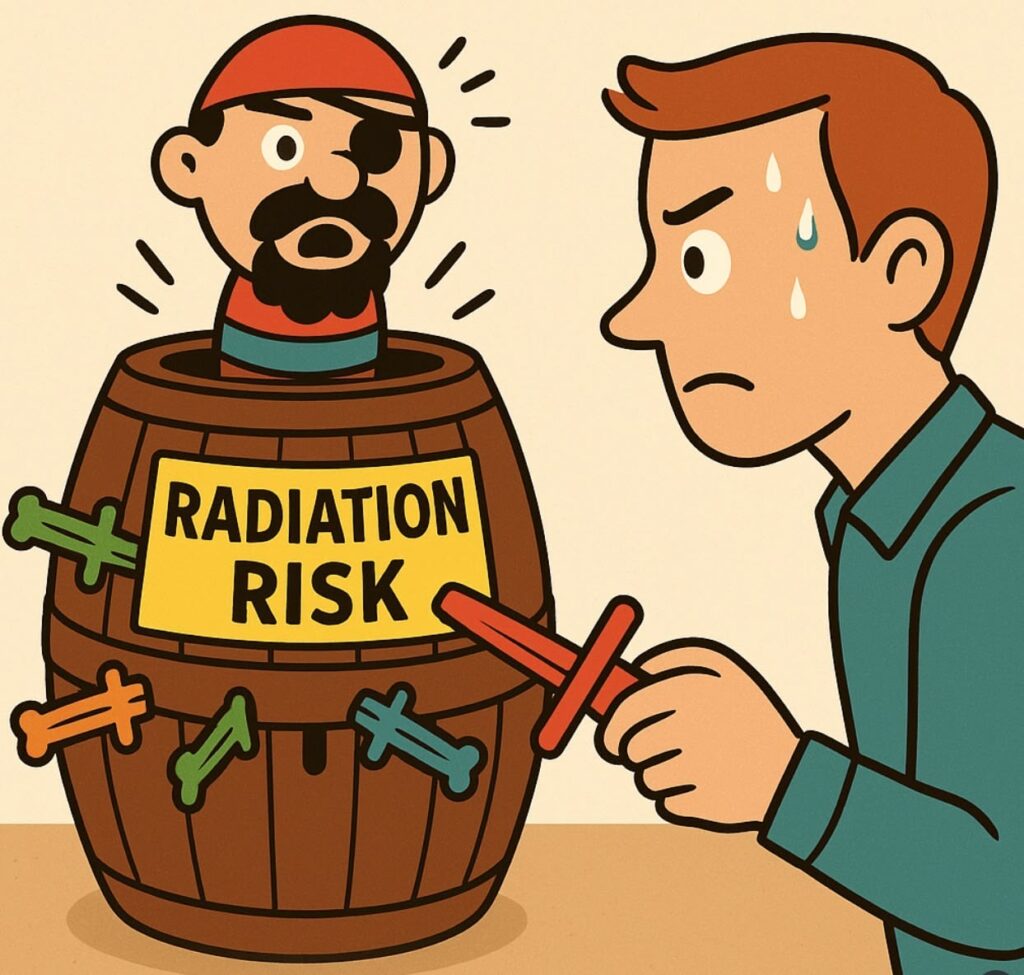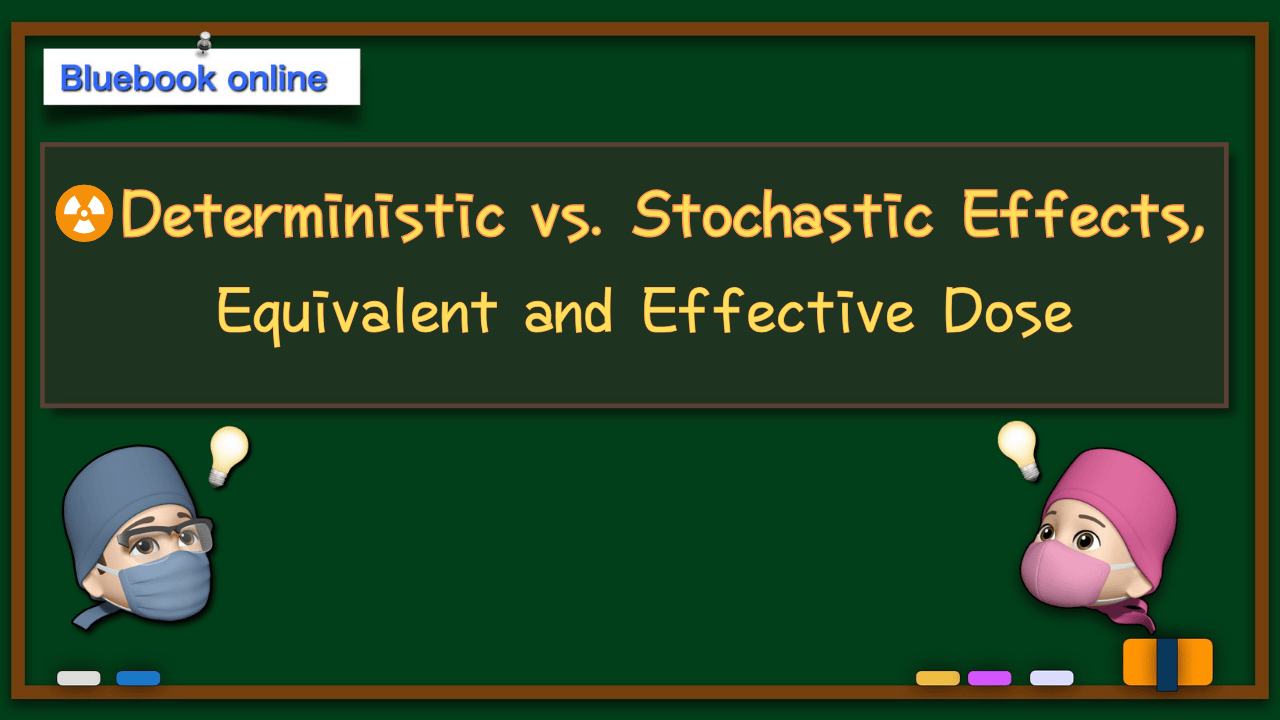👉👉 🇺🇸 All Posts 🇬🇧 / 🇯🇵 記事一覧 🇯🇵 👈👈
♦️ Introduction
When you read about radiation protection, you’ll always come across the terms deterministic effects and stochastic effects. Many people have a vague idea, can answer exam questions somehow, but feel unsure when asked to “explain them clearly.” 😅
In this article, we’ll go through these key concepts step by step:
- Deterministic effects (depends on a single strong hit of damage)
- Stochastic effects (depends on cumulative exposure over time)
- Equivalent dose (indicator for stochastic effects: organ-specific cancer risk)
- Effective dose (indicator for stochastic effects: overall cancer risk)
♦️ Deterministic Effects (low risk if only mild exposure)
When the human body is exposed to radiation, the DNA deep inside cells can be damaged. Fortunately, our body is amazing — small amounts of damage can be repaired, or damaged cells can be eliminated through programmed cell death (apoptosis).
However, if a strong hit of radiation strikes, repair cannot keep up, and many cells die. This leads to tissue injury or organ dysfunction. For example, radiation damage to reproductive organs can cause infertility, and damage to the lens of the eye can lead to cataracts. Skin injury or bone marrow suppression are other examples.
The boundary between tolerable damage and harmful levels is called the threshold. Once this threshold is exceeded, predictable organ-specific injuries occur — this is why they are called deterministic effects.
The absorbed radiation dose is expressed in Gray (Gy), the unit of absorbed dose.
👉 Analogy: being hit repeatedly by a child causes little harm, but a single punch from a professional boxer can cause serious damage. That’s a deterministic effect.

♦️ Stochastic Effects (risk increases with accumulation)
As mentioned above, DNA damage can often be repaired. But sometimes, repair is incomplete and mutations remain. These mutations may later cause cancer or lead to hereditary effects in offspring.
An important point: stochastic effects are considered to have no threshold. In other words, even small exposures carry some non-zero risk. The risk increases with cumulative dose.
Therefore, these are called stochastic effects (because whether disease occurs is based on probability). In simple terms: stochastic effects = cancer risk.
👉 Analogy: like the game “Pop-up Pirate” or any probability game — at first, nothing may happen, but the more you play, the higher the chance the pirate jumps out. Similarly, the more exposure accumulates, the higher the cancer risk.

Equivalent and Effective Dose (unit: Sievert, Sv)
Equivalent dose and effective dose are used to estimate stochastic effects. The point is not “how much you got at once,” but rather “how much has accumulated over a period of time.”
- Equivalent dose → radiation dose to individual organs/tissues (Sv)
- Effective dose → total risk to the whole body (Sv)
How is effective dose calculated?
- Take the equivalent dose for each organ.
- Multiply by the tissue weighting factor (a measure of radiation sensitivity).
- Add them all up. (All factors are set so their sum = 1.0.)
Some tissues (like bone marrow) are more radiosensitive, while others (like skin) are less sensitive. That’s why the factors differ.
In occupational exposure, both equivalent and effective dose limits are defined. By monitoring them properly, we can reduce future cancer and genetic risks.
📝 Summary
- Deterministic effects → strong one-time exposure, threshold exists, unit: Gy. Examples: infertility, cataracts, skin injury.
- Stochastic effects → cumulative risk, no threshold, unit: Sv. Examples: cancer, hereditary effects.
- Equivalent dose → organ-specific dose (Sv).
- Effective dose → whole-body risk indicator (Sv).

コメントを投稿するにはログインしてください。